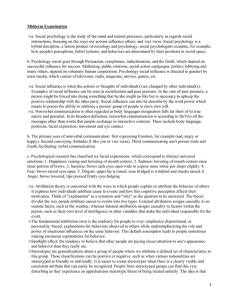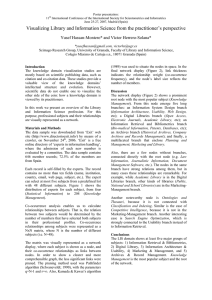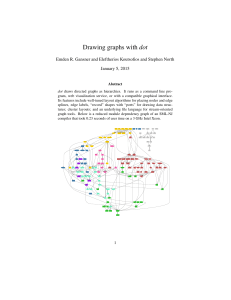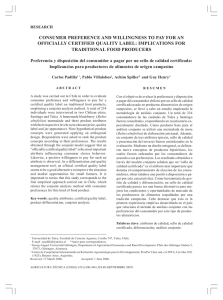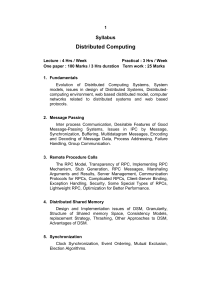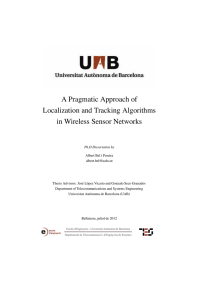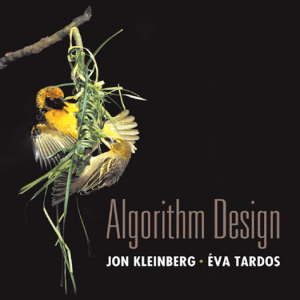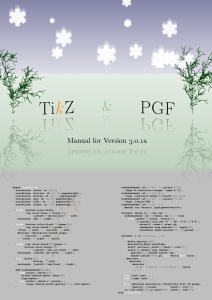RACЛ Е - Real Academia de Ciencias Exactas, Físicas y Naturales
Anuncio
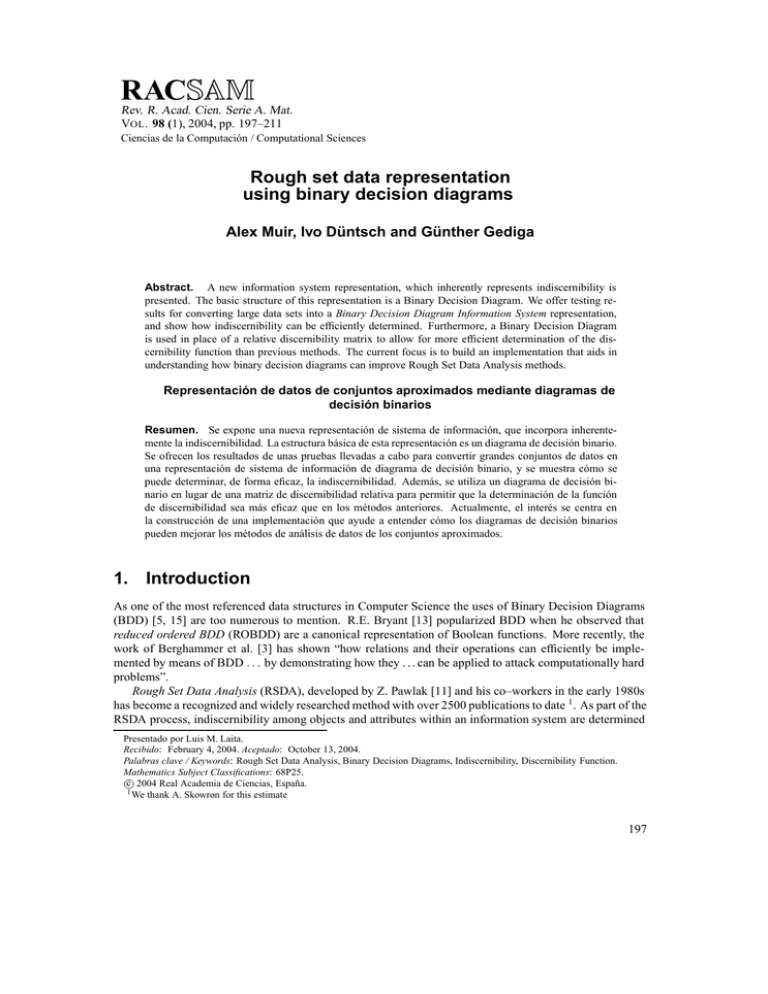
RAC Rev. R. Acad. Cien. Serie A. Mat. VOL . 98 (1), 2004, pp. 197–211 Ciencias de la Computación / Computational Sciences Rough set data representation using binary decision diagrams Alex Muir, Ivo Düntsch and Günther Gediga Abstract. A new information system representation, which inherently represents indiscernibility is presented. The basic structure of this representation is a Binary Decision Diagram. We offer testing results for converting large data sets into a Binary Decision Diagram Information System representation, and show how indiscernibility can be efficiently determined. Furthermore, a Binary Decision Diagram is used in place of a relative discernibility matrix to allow for more efficient determination of the discernibility function than previous methods. The current focus is to build an implementation that aids in understanding how binary decision diagrams can improve Rough Set Data Analysis methods. Representación de datos de conjuntos aproximados mediante diagramas de decisión binarios Resumen. Se expone una nueva representación de sistema de información, que incorpora inherentemente la indiscernibilidad. La estructura básica de esta representación es un diagrama de decisión binario. Se ofrecen los resultados de unas pruebas llevadas a cabo para convertir grandes conjuntos de datos en una representación de sistema de información de diagrama de decisión binario, y se muestra cómo se puede determinar, de forma eficaz, la indiscernibilidad. Además, se utiliza un diagrama de decisión binario en lugar de una matriz de discernibilidad relativa para permitir que la determinación de la función de discernibilidad sea más eficaz que en los métodos anteriores. Actualmente, el interés se centra en la construcción de una implementación que ayude a entender cómo los diagramas de decisión binarios pueden mejorar los métodos de análisis de datos de los conjuntos aproximados. 1. Introduction As one of the most referenced data structures in Computer Science the uses of Binary Decision Diagrams (BDD) [5, 15] are too numerous to mention. R.E. Bryant [13] popularized BDD when he observed that reduced ordered BDD (ROBDD) are a canonical representation of Boolean functions. More recently, the work of Berghammer et al. [3] has shown “how relations and their operations can efficiently be impleby demonstrating how they . . . can be applied to attack computationally hard mented by means of BDD problems”. Rough Set Data Analysis (RSDA), developed by Z. Pawlak [11] and his co–workers in the early 1980s has become a recognized and widely researched method with over 2500 publications to date 1 . As part of the RSDA process, indiscernibility among objects and attributes within an information system are determined Presentado por Luis M. Laita. Recibido: February 4, 2004. Aceptado: October 13, 2004. Palabras clave / Keywords: Rough Set Data Analysis, Binary Decision Diagrams, Indiscernibility, Discernibility Function. Mathematics Subject Classifications: 68P25. c 2004 Real Academia de Ciencias, España. 1 We thank A. Skowron for this estimate ­ 197 A. Muir, I Düntsch and G. Gediga in order to perform rule dependency generation. Previously methods of RSDA were not feasible with large data tables (e.g. with over 10,000 objects)even on powerful workstations. Nguyen and Nguyen [9]. Demonstrating more efficient reduct determination than previous methods, we offer testing results using UCI data sets with more than 10,000 objects. 2. Rough set data analysis 2.1. Basics The basic idea of RSDA is that objects are only discernable up to a certain granularity. For example, if we only know that a hit and run car was a red BMW, then, within this framework, all red BMWs are the same to us. It is the aim of the police to increase the granularity of the information so that, finally, the culprit’s car is distinguishable from all others. The mathematical tool of RSDA are indiscernibility relations, which are simply equivalence relations, i.e. they are reflexive, antisymmetric and transitive. Data representation in RSDA is done via information systems, which can be described as tables of Feature–vector relationships. More formally, an information system is a structure , where is a finite non–empty set of objects. is a finite set of mappings , called attributes. as a generic information system Throughout the rest of the paper we will use with and . We can think of as a descriptor which assigns value to object Object for attribute . Since both and are finite, we can picture an information system as a table where the rows are labeled by the objects and the columns are labeled by the attributes. An example is shown in Table 1. In terms of measurement theory, RSDA operates on a nominal scale, where only (in-)equality is Table 1. A simple information system recognized. Each set of attributes determines an indiscernibility relation on by setting If , we usually just write . Observe that for (1) , (2) (3) The complexity of determining indiscernibility relations is given by Lemma 1 [9] If 198 , and , then can be found in time and space. Rough sets and BDD One aim of RSDA is to eliminate features which are superfluous for a reclassification of the data; in other words, one looks for attribute sets which give the same classification of the objects as the full set , and which are minimal with respect to this property; such sets are called reducts. Formally, a reduct is a set of attributes such that 1. . 2. If ´ , then ´ . Reducts correspond to keys of a relational database; consequently; as was pointed out in [12] the problem of finding a reduct of minimal cardinality is, in general, NP-hard, and finding all reducts has exponential complexity [17]. Clearly, each has a reduct; the intersection of all reducts is called the core. , and suppose that Let be a new attribute with a set of values and information function . The aim is to relate the values an object has with respect to the attributes of to its value with respect to . The new attribute is called the dependent attribute or decision attribute; the elements of are is called a decision system; it is called called independent or condition attributes. The structure consistent if implies (4) An example of a decision system is given in Table 2. There we interpret the decision variable as “Demand”. Table 2. A decision system Type 1 2 3 4 5 6 Price high low low medium medium high Guarantee 24 months 6 months 12 months 12 months 18 months 12 months Sound Stereo Mono Stereo Stereo Stereo Stereo Screen 76 66 36 51 51 51 d high low low high high low A local rule of is a pair where is a class of , a class of and . This is the case just when all elements that have the same attribute vector determined by , have the same decision value. In Table 2, we have, for example, the local rule low , where Price . This rule can be read as If Price = low, then Demand = low. Therefore, we usually write instead of . A class of is called d-deterministic . The union of all (or just deterministic, if is understood), if there is some class such that deterministic classes of is called the -positive region of , denoted by . The characteristic function of is denoted by . If each class of is deterministic, i.e. if , then we say that is dependent on , and write . In this case, we call a global rule or just a rule. A d-reduct now is a set of attributes which is minimal with respect to . If it is clear that we are considering decision systems, we will just speak of reducts. 2.2. Discernibility matrices and Boolean reasoning Using the fact that RSDA operates on a nominal scale, an alternative way of representing discernibility is to the set Æ of all those attributes for which cross-classify objects by assigning to each pair [17]; the result is called a discernibility matrix. The discernibility matrix for our example of 199 A. Muir, I Düntsch and G. Gediga Table 3. A discernibility matrix Table 1 is shown in Table 3. It may be noted that time complexity of finding the indiscernibility matrix from a given information system is and that the space required to store the matrix is as well. Associated with a discernibility matrix is a discernibility function, which is a frequently used tool to handle reducts [17]. First, we need some preparation from Boolean reasoning: Suppose that is the two element Boolean algebra. A Boolean function is a mapping , where , and . If we say that if for all . A Boolean function is called monotone, if implies . If is a set of variables, and , we call an implicant of , if for any valuation of for all implies (5) times Observe that we can regard the left hand side of (5) as a conjunction, and we can equivalently write Thus, an implicant gives us a sufficient condition for . A prime implicant of (6) is a subset of such that is an implicant, but no proper subset of has this property. Suppose that , and . For each , we let be a variable, and, for Æ , we define Æ Æ . Now, the discernibility function of is the formal expression (7) ¬ We usually just write if is understood. The discernibility function of the matrix of Table 3 is therefore Æ Æ The connection between reducts and the discernibility has been shown by Skowron and Rauszer [17]; for completeness, we provide a proof. if and only if is a prime implicant of . such that P ROOF. “”: Suppose that is a reduct of , and let be a valuation of for all . We first show that is an implicant of . Assume that . Then, by definition (7), there are ¬ such that and for all . It follows that , and therefore, does not distinguish between and . Since is a , so that, in fact, and cannot be distinguished by any attribute reduct, we have, in particular, in . Hence, , contrary to our assumption. To show that is prime, suppose that is an implicant of , and assume there are such that , and distinguishes and , i.e. . It follows from that . Let be a valuation such that if (8) Proposition 1 is a reduct of Æ Æ Æ Æ Æ 200 otherwise Æ Rough sets and BDD Then, , while , contradicting the assumption that is an implicant of . It follows that , and the fact that is a reduct implies . “ ”: Suppose that is a prime implicant of , and let ; then, Æ . Assume that distinguishes and , and choose a valuation as in (8). By the same argument as above, we arrive at a contradiction. Since , contains a reduct , and it is straightforward to see that is an implicant. It now follows from the fact that is prime, that . is a reduct of if and only if . Corollary 1 for all is minimal with respect to the property Æ (9) Æ We can define a relative discernibility matrix for a decision system in a slightly different way . In case of than for : First, construct the discernibility matrix for the extended attribute set our TV example, the matrix is given in Table 4. Table 4. Discernibility matrix 1 2 3 4 5 2 Pr,Gu,So,Sc,d 3 Pr,Gu,Sc,d Gu,So,Sc 4 Pr,Gu,Sc Pr,Gu,So,Sc,d Pr,Sc,d Next we define a relative discernibility matrix Æ Æ 5 Pr,Gu,Sc Pr,Gu,So,Sc,d Pr,Gu,Sc,d Gu by 6 Gu,Sc,d Pr,Gu,So,Sc Pr,Sc Pr,d Pr,Gu,d if Æ and or otherwise. The result for the TV example is shown in Table 5; note that (10) . Table 5. Relative discernibility matrix 1 2 3 4 5 Let 3 Pr,Gu,Sc 4 5 Pr,Gu,So,Sc Pr,Sc Pr,Gu,So,Sc Pr,Gu,Sc 6 Gu,Sc Pr Pr, Gu be the Boolean function belonging to . Then, Proposition 2 [17] . 2 Pr,Gu,So,Sc ½ is a reduct of if and only if ½ is a prime implicant of For our example, after absorption laws, we see that the relative discernibility function has the form Pr Gu So Sc Pr Gu Sc (11) The prime implicants are Pr,Gu and Pr,Sc . Much work has been done on employing methods of Boolean reasoning for reduct determination and rule finding, and we refer the reader to [7–9, 16, 17]. 201 A. Muir, I Düntsch and G. Gediga 3. Binary Decision Diagrams Given a n-ary Boolean function , an ordered binary decision diagram (OBDD) [13] is a finite directed acyclic graph with one root, levels, and exactly two branches at each non-terminal node. One of these is the case, denoted by and shown as a dashed line, the other the case, denoted by and drawn as a solid line. The levels are determined by the (fixed) ordering of the variables ­ ­ ­ . Each traversal through the tree corresponds to an assignment to the variables, and the nodes at level give the evaluation of corresponding through this traversal. Figure 1 shows an OBDD for the function . Figure 1. An OBDD for The following reduction rules do not change the value of the function: 1. Use only one terminal label for and one terminal label for and redirect all lines from level to the respective node. 2. If two non-terminal nodes are on the same level and eliminate one of them, say, and redirect all lines into to . 3. If for some non–terminal node , then , then remove and redirect all lines into to . The result of applying these rules to an OBDD until none of them can be applied any more is called a reduced ordered binary decision diagram (ROBDD). Figure 2 shows the ROBDD of the function . A Shared Binary Decision Diagram Figure 3, is a multirooted directed acyclic graph that represents multiple Boolean functions [14]. Reuse of nodes by more than one Boolean function in the shared BDD allows for reduced memory use. A quasi-reduced BDD [10] is one that does not apply Rule 3 above resulting in each node having paths to one or more nodes one level below. 4. Binary Decision Diagram Information System 4.1. Representation A Binary Decision Diagram Information System(BDDIS) is a quasi-reduced shared BDD which represents both data and indiscernibility within an information system. A BDDIS has one or more root nodes. Each unique root node has a subtree that may share nodes with other objects and represents one or more indiscernible objects. This level containing root nodes is defined as the object-top level; a top level element is 202 Rough sets and BDD Figure 2. An ROBDD for Figure 3. Shared Binary Decision Diagram Figure 4. BDDIS: Shaded Attribute Top Level referenced by , . The shared nature of the structure provides the mechanism for which indiscernibility in inherent. Every unique attribute value is represented by a unique node on one level of the roots subtrees defined as the attribute-top level. The current implementation has as leaf nodes the unique characters present within the information system. An alternative more efficient representation is discussed in Section 7. From the information system of Table 1 the BDDISs of Figures 4 and 5 are derived. Figure 4 is shaded to visualize the attribute-top level. Similarly, 5 is shaded to visualize the object-top level. Each column within the information system is represented by a path composed of a unique series of lo and/or hi branches arriving at an attribute-top level node. In Figures 4 and 5, the first column is represented by the path lo-lo, the second a path lo-hi, the third a path hi-lo... Each node is labeled with Ln x for level number and node number . 4.2. Indiscernibility Two objects are in the same equivalence class if and reference the same object-top level node. From Figure 5 we can derive the following object-indiscernible sets: . Objects are indiscernible with respect to one attribute if by traversing a unique series of branches from each object root node the same attribute-top level node is attained. From Figure 4 it is clear that objects 2, 3, 4 203 A. Muir, I Düntsch and G. Gediga Figure 5. BDDIS: Shaded Object Top Level have a common path hi-lo to node L2 5 representing the value 18 for attribute . Thus the object 2,3,4 are indiscernible with respect to attribute . For a given data set, the size of the BDDIS decreases as the level of indiscernibility increases. The worst-case data that causes the BDDIS to grow as large as possible – relative to the size of the information system – is data containing all unique attribute values. The quasi-reduced structure is chosen to reduce the complexity associated with determining indiscernibility for the initial implementation. Methods which reduce BDDIS size are discussed in Section 7.. 4.3. Construction A build tree is a two-dimensional array used to convert one row of the information system at a time into one root node and one subtree within the BDDIS. The bottom row consists of null-padded attribute values as characters of which each character pair j and j+1 is stored as lo and hi keys within the nodes one level above the leaf nodes in the BDDIS. The leaf nodes only exist logically within these nodes. The attribute values are padded to the left with null characters to create attributes values of equal character length, allowing each attribute value to form a subtree of equal height in the BDDIS. One AVL tree [1] for each BDDIS level ensures nodes are unique. Each node in the AVL trees is also a node within the BDDIS as well so that each AVL tree collectively forms the BDDIS. Each node contains keys, which represent the location of the lo and hi children. The AVL trees use the lo-key as primary key and the hi-key as secondary key for insertions and rebalancing. Each AVL tree is stored in a two-dimensional array. The array index is used as the key of each node. For each level of the build tree, a probing/ insertion operation is performed into the corresponding AVL tree that returns the node key of either an existing node or a newly inserted node. The returned key is placed . within build tree in the element corresponding to the parent of the lo and hi keys: next level Upon each level of the build tree the same process is performed bottom up resulting with the top element in the build tree representing an object root node and the completion of the addition of an object into the BDDIS. 4.4. Order of operation The conversion process involves AVL probing/insertion operations. For an object with 32 attributes having 16 characters each, there are a total of probing operations. Only the last object probes the AVL trees holding nodes created from the insertion operations of all other objects before it. e.g the third object 204 Rough sets and BDD Figure 6. BDDIS as AVL Trees converted, probes the AVL trees holding nodes created by the insertion operations for the first and the second objects. Figure 7 displays the relationship between the size of the AVL trees representing each level and the number of probe/insertion operations with worst-case data. Note that the number of probe/insertion operations decreases as the maximum size of the AVL trees increases, and that the size of the levels below the attribute-top level is much smaller as compared to the number of probe operations. Figure 7. Exploration of order developed from AVL size and the number of probe operations It is observed that for each level num probe operations max AVL size. With objects, attributes per object, characters per attribute, unique characters, the max AVL size below the attribute top level is restricted by either the number of possible combinations of digits or largest number of nodes . It is clear that for some large value of and , the BDDIS will grow larger than available memory with worst case data. It is expected that will, in general, be small in most data sets. 205 A. Muir, I Düntsch and G. Gediga 5. BDDIS Testing Results The success of the representation is currently defined in terms of its speed, and demonstrated using data sets from the UCI data repository [4] with initial results given in Table 6. Furthermore, tests with random data, shown in Table 7, illustrate the ability of the method to handle larger data sets. Table 6. Conversion to BDDIS; UCI Data Sets; Pentium 4 1.8GHz Data set Iris Nursery Adult Cover Type Connect-4 Opening Objects number discernible 150 147 12960 12960 32561 32537 30000 30000 67557 67557 Attributes number unique 5 77 9 28 15 22124 55 6399 42 6 Size (KB) Text BDDIS 5 13 1047 440 3913 3385 3811 5626 5895 2120 Time ! 0.00001 1 7 13 5 In Table 6, the size of UCI data as text, and the time required to convert the data into the BDDIS, are listed. In addition, in order to gain a better understanding of the results, the size of the data along with the number of indiscernible objects and unique attributes within the information system is listed; in this way, we can represent the relationship of the level of indiscernibility and the size of the data with the BDDIS size and conversion time required. As the level of indiscernibility increases or the number of unique attributes increases, the AVL trees grows larger, and thus, the conversion time required and the memory used by the BDDIS are increased. Table 7 displays results of the conversion into BDDIS representation on a Pentium 4 1.8GHz system using random 10-digit data sets of eight attributes and eight characters each. Random data cause the quasireduced BDDIS to grow unreasonably large as there is little opportunity for the BDDIS to reuse nodes because, in general, classes are small, and the large majority of attribute values are unique. Table 7. Conversion to BDDIS; Random data sets; Pentium 4 1.8GHz Number of objects 100000 200000 300000 BDDIS (MB) 24.4 48.6 72.6 Time ! 40 136 281 6. Discernibility functions using BDD In this Section we shall describe a method to determine a Boolean discernibility function without the requirement to create a discernibility matrix. The current implementation uses the Buddy BDD package [6] to represent the Boolean discernibility function as a BDD. Instead of creating a set of disjunctions for pairs of each object in the information system, the relative discernibility matrix can be created using pairs of discernible object classes. Each discernible object class is represented by a top node within the BDDIS. i.e each root node represents an object discernible from all other objects. A depth first traversal of the BDDIS for every two discernible objects classes that are indiscernible with respect to their decision attributes is performed from top node to attribute top level node in order to create each set of disjunctions in turn. An AND operation is performed with each new set of disjunctions into what will eventually become the final BDD representing the discernibility function; the BDD is always in a reduced form. Figure 8 represents the Boolean function for Table 2. A reduct is derived from each 206 Rough sets and BDD possible set of unique paths leading to the leaf node , which for Figure 8 are and . Buddy codes attributes using integers; in Figure 8, attribute represents price, and represents guarantee. Figure 8. Discernibility function as a BDD for Table 2 6.1. Order of the operation In the worst case, the operation requires traversals of the BDDIS and AND operations into the BDD discernibility function. The Buddy package uses a hash table to represent the BDD discernibility function. The AND operation of each set of disjunctions into the Boolean discernibility function as well ¾ . As as the creation of the disjunctions is done in constant time [2] . The order of operation is an outlook a method of creating a temporary reverse threaded BDDIS in order to derive the discernibility function more efficiently is explored. 6.2. Time behavior of reduct search in selected UCI data sets Table 8 displays results for deriving the discernibility function along with the number of reducts attained and the time required. The results show that as the number of object gets large the time required gets unreasonably large. Table 8. Discernibility function derivation from BDDIS; UCI Data Sets; Pentium 4 1.8GHz Data set Iris Nursery Adult Cover Type Connect-4 Opening Objects number discernible 150 147 12960 12960 32561 32537 30000 30000 67557 67557 Attr. 9 9 15 55 42 Num Reducts. 4 1 2 1969 547 Time ! 1 371 2489 5526 24990 It should be mentioned that the adult data set has missing values. Currently, there is no extra missing data treatment in our system, and we just use a code for missing as an extra value. Missing data handling within the BDDIS is one of the next steps after the feasibility of the representation is proven. 207 A. Muir, I Düntsch and G. Gediga Table 9. A coded information system Type 1 2 3 4 5 6 Price 0 1 1 2 2 0 Guarantee 0 1 2 2 3 2 Sound 0 1 0 0 0 0 Screen 0 1 2 3 3 3 d 0 1 1 0 0 1 7. Outlook 7.1. Reduced BDDIS Two methods can be taken to reduce the size of the BDDIS. One can reduce the BDDIS by applying the ROBDD rules described in Section 3. which were used to reduce Figure 1to Figure 2. The BDDIS would then be a fully reduced BDD and no longer simply quasi-reduced. Alternatively, one can create the BDDIS using a coded information system in which every attribute ; here, each unique coded value of the original information system is coded to the values value represents a unique attribute value. An additional hash table is used to map the codes to the original values. Using the same codings for different entries will reduce the size of the BDDIS, whereas the cost of the hash table is negligible. Table 9 represents a coded decision system for Table 2. A coded decision system can be efficiently derived by creating a temporary BDDIS representing only one attribute. The top nodes will represent the object indiscernibility with respect to one attribute and derive a coding for the column. From Figure 7, when using worst case data, the attribute top level representing all unique attribute values in the decision system, contains nodes. A coded decision system reduces the number of unique attribute values to . This can represent a huge reduction is the number of nodes required to represent the decision system when is large. In a BDDIS created from a coded decision system the attribute top level becomes the leaf nodes level. Leaf nodes are represented logically as lo and hi keys within the leaf parent nodes. A BDDIS removes nodes plus all nodes below which formed the attribute top level subtrees. The BDDIS also has the property of allowing further reductions to occur above the attribute top level as the ROBDD rules described in Section 3. are more frequently satisfied. For example: The number of nodes per level for the BDDIS derived by the random data test of 100.000 objects described within Table 7 is displayed in Figure 10. The BDDIS will remove levels 3, 4 and 5 resulting in the reduction of 1,506,819 nodes to 700,000 nodes. As well some number of further reductions will occur as reduction rules will be more likely to apply. Table 10. BDD nodes per level: 100,000 Objects from random data Level 0 - Top 1 2 3 4 5 Number Nodes 100,000 200,000 400,000 796,719 10,000 100 A rule is derived from this process in that the larger the number of characters that exist in a string the 208 Rough sets and BDD more nodes that are removed from the BDDIS as compared to the BDDIS. A further random test with 100,000 objects was performed using 16 characters per attribute with again 8 attributes resulting in a total of 3,096,790 nodes within the BDDIS. In this case the BDDIS representation removes levels 3, 4, 5, 6, resulting again in a 700,000 node structure. It may be worthy of mention that worst-case data becomes near-best case data when using a fully reduced BDDIS derived from a coded decision system. If an decision system contained all unique attribute values in each column, for each row the coded information system would be composed completely of the integer value .11. Each row is converted into a subtree into the BDDIS and following the reduction rules, each root node is also it’s only leaf node . Thus a series of nodes exists, regardless of the number of attributes. Of course a new worst case exists for the fully reduced BDDIS. This would be a coded decision system where each row of attribute values creates as many permutations from coded attribute values as possible which limit as much as possible the reduction rules from reducing the BDDIS. The best case represented by one root node is a coded information system where every attribute value is . Table 11. Worst case coded information system 7.2. Temporary Reverse-Threaded BDDIS. The time required to create the discernibility function can be greatly reduced by creating a temporary reverse-threaded BDDIS we denote as BDDIS". The BDDIS" would contain the contain the same nodes as the BDDIS, but each node would contain two arrays; One for references to parents coming via hi paths, and one to parents coming via low paths within the BDDIS. The BDDIS" can be created using one complete traversal of the BDDIS. The process to create a discernibility matrix then becomes as follows: For each attribute of each object-top level root node , traverse down a unique path of the BDDIS to an attribute-top level node. Then traverse up the BDDIS" following the reverse unique path to zero or more object-top level root nodes. This finds all objects that are indiscernible with with respect to . Discernibility of with every other object-top level root node is then implied with respect to and stored as disjunctions within a temporary array of length. A BDD representing a discernibility function for with respect to all other objects is derived using this array. traversals must be performed down the BDDIS. Some number # traversals up the BDDIS" , that is greater or equal to the number of objects indiscernible with respect to , must also be performed; Some small number of incorrect partial paths up the BDDIS" will occur. # is derived which is much less that the current discussed in 6.1.. 8. Concluding remarks The quasi-reduced non reverse threaded implementation described in Section 4.1. is used in order to reduce complexity of the initial implementation in order to gain an understanding of how BDDs can be used to improve Rough Set Methods. Larger data sets then previously and even very large data with random structure can be treated as a basis for rough set data analysis with the chosen BDDIS representation, the 209 A. Muir, I Düntsch and G. Gediga initial results described have proven to be encouraging and will result in a continued focus on using BDD for rough set data analysis. Acknowledgement. Co-operation for this paper was supported by EU COST Action 274 “Theory and Applications of Relational Structures as Knowledge Instruments” (TARSKI); http://www.tarski.org/. Alex Muir and Ivo Düntsch gratefully acknowledge support from the USRA and PDG programmes of the National Sciences and Engineering Research Council of Canada. Alex Muir was also supported by the President’s Fund, Brock University. References [1] Adel’son-Vel’skii, G. M. and Landis, Y. M. (1962). An algorithm for the organization of information. Soviet Mathematics Doklady, 3:1259–1262. [2] Andersen, H. R. (1997). An introduction to binary decision diagrams. Lecture notes, Technical University of Denmark, Lyngby. http://www.itu.dk/people/hra/bdd97-abstract.html. [3] Berghammer, R., Leoniuk, B., and Milanese, U. (2002). Implementation of relational algebra using binary decision diagrams. In de Swart, H., editor, 6th International Conference RelMiCS 2001 and 1st Workshop of COST Action 274 TARSKI, Oisterwijk, The Netherlands, October 16-21, volume 2561 of Lecture Notes in Computer Science, pages 241–257, Berlin-Heidelberg-New York. Springer. [4] Blake, C. and Merz, C. (1998). UCI repository of machine learning databases. University of California, Irvine, Dept. of Information and Computer Sciences. http://www.ics.uci.edu/˜mlearn/ MLRepository.html. [5] Lee, C. Y. (1959). Representation of switching circuits by binary-decision programs. Bell System Technical Journal, 38:985–999. [6] Lind-Nielsen, J. (2003). Buddy – a binary decision diagram package – version 2.2. http://www. itu.dk/research/buddy/. [7] Nguyen, H. S. and Nguyen, S. H. (1998a). Discretization methods in data mining. In Polkowski, L. and Skowron, A., editors, Rough sets in knowledge discovery, Vol. 1, pages 451–482. Physica–Verlag, Heidelberg. [8] Nguyen, H. S. and Nguyen, S. H. (1998b). Pattern extraction from data. Fundamenta Informaticae, 34:129–144. [9] Nguyen, S. and Nguyen, H. (1996). Some efficient algorithms for rough set methods. In Proc. of the Conference of Information Processing and Management of Uncertainty in Knowledge-Based Systems (IPMU), pages 1451–1456, Granada. [10] Ochi, H., Yasuoka, K., and Yajima, S. (1993). Breadth-first manipulation of very large binary-decision diagrams. In Proceedings of the 1993 IEEE/ACM international conference on Computer-aided design, pages 48–55. IEEE Computer Society Press. [11] Pawlak, Z. (1982). Rough sets. Internat. J. Comput. Inform. Sci., 11:341–356. [12] Rauszer, C. (1991). Reducts in information systems. Fundamenta Informaticae, 15:1–12. [13] R.E. Bryant (1986). Graph-Based Algorithms for Boolean Function Manipulation. IEEE Transactions on Computers, C-35(8):677–691. 210 Rough sets and BDD [14] S. Minato, N. Ishiura, and S. Yajima (1990). Shared Binary Decision Diagram with Attributed Edges for Efficient Boolean Function Manipulation. In Proceedings of the 27th ACM/IEEE design automation conference, pages 52–57, Los Alamitos, CA. ACM/IEEE, IEEE Society Press. [15] S.B. Akers (1978). Binary Decision Diagrams. IEEE Transactions on Computers, C-27(6). [16] Skowron, A. (1995). Extracting laws from decision tables - a rough set approach. Computational Intelligence, 11:371–388. [17] Skowron, A. and Rauszer, C. (1992). The discernibility matrices and functions in information systems. In Słowiński, R., editor, Intelligent decision support: Handbook of applications and advances of rough set theory, volume 11 of System Theory, Knowledge Engineering and Problem Solving, pages 331–362. Kluwer, Dordrecht. Alex Muir, Ivo Düntsch, Günther Gediga Department of Computer Science Brock University St Catharines, ON, Canada, L2S 3A1 [email protected],[email protected],[email protected] 211
